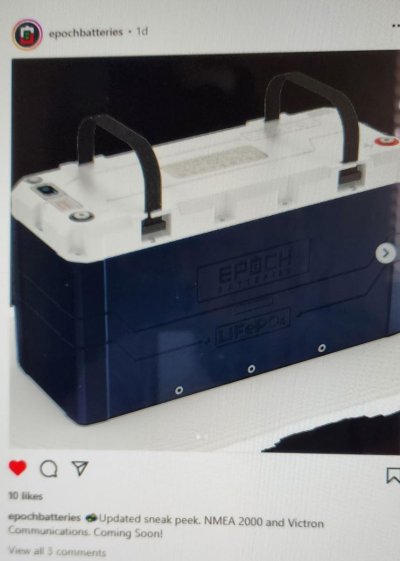Barking Sands
Guru
- Joined
- Dec 24, 2019
- Messages
- 975
- Location
- New Port Richey, Fl
- Vessel Name
- M/V Intrigue
- Vessel Make
- 1985 Tung Hwa Senator
Panbo has just done an extensive test on the Epoch Batteries. Ben Steins conclusion is that they are the best battery he has tested to date. Apparently Epoch is an affiliate of RoyPow who is owned by EVE of eve cells. Here is a link to the write up.
https://panbo.com/epoch-batteries-elegant-drop-in-lifepo4/
I just put a 36 volt version in my golf cart to test these. They caught my attention and i figured they would make great house batteries and they meet many of the new abyc requirements as a drop in. The tethered monitor has an audible allert for most warnings. The only current issue is capacity. Many boaters will need larger AH ratings. But it does appear they will have some MUCH larger capacity batteries soon. Possibly in excess of 400ah. And the price is right. With the massive number of new companies out there its hard to decipher if one is better than the other. But the Epoch is looking like it meets the needs of boaters. Anyways..the Panbo article was pretty informative.
https://panbo.com/epoch-batteries-elegant-drop-in-lifepo4/
I just put a 36 volt version in my golf cart to test these. They caught my attention and i figured they would make great house batteries and they meet many of the new abyc requirements as a drop in. The tethered monitor has an audible allert for most warnings. The only current issue is capacity. Many boaters will need larger AH ratings. But it does appear they will have some MUCH larger capacity batteries soon. Possibly in excess of 400ah. And the price is right. With the massive number of new companies out there its hard to decipher if one is better than the other. But the Epoch is looking like it meets the needs of boaters. Anyways..the Panbo article was pretty informative.

